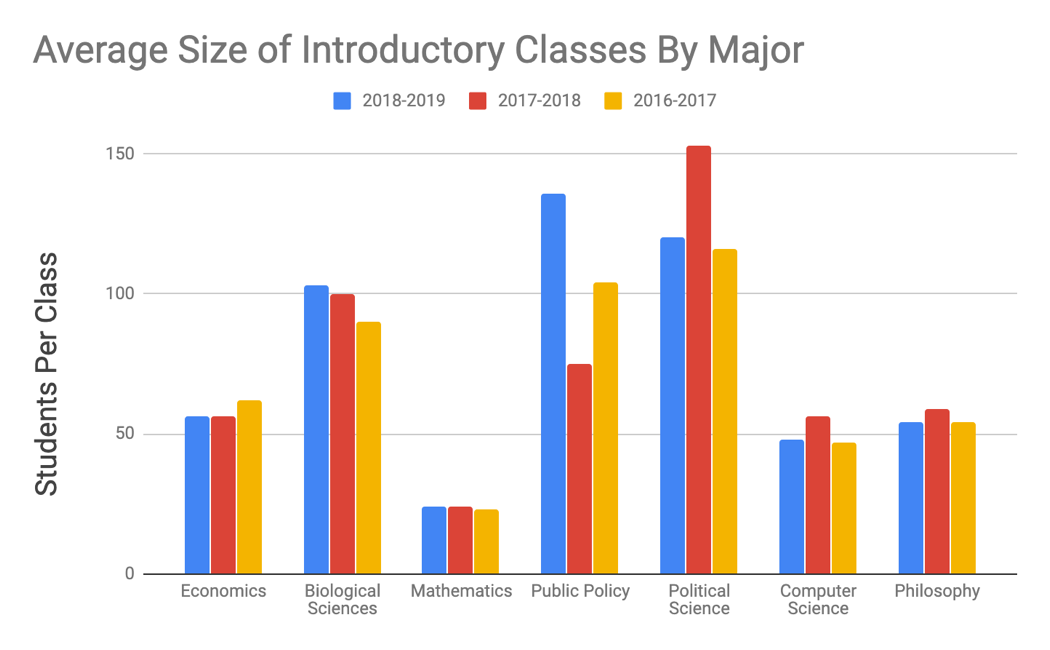For some Organic Chemistry students, going to class this fall will mean attending a video streaming session. Due to high enrollment, the Department of Chemistry will offer one 303-person section of Organic Chemistry this fall. However, no classroom space available to the chemistry department can fit 303 students—so the department is also using an overflow classroom to video stream the lecture.
“Due to high demand for Organic Chemistry, the lecture portion of this class will be video recorded in Kent 107 and a live feed broadcast into Kent 120,” a Canvas announcement for the class said. “Seating in Kent 107 will be on a first-come first-served basis and once seats are filled students must go to Kent 120.”
Organic Chemistry’s overflow problem is just one symptom of a growing undergrad population that is straining classroom space. Registrar records show that the number of undergraduates enrolled in 2018 has grown by 2,111 students since 2004.
To keep up with the increase of students in popular majors, some departments have brought on new faculty members; however, in some departments, available facilities spaces have not kept pace with demand.
Introductory classes are particularly likely to have large enrollments, although their size varies significantly across majors. The University reports a student to faculty ratio of 5:1, but an analysis of the top six majors shows introductory class sizes average more than 50 students.

Economics, the largest major on campus, awarded 307 degrees in 2019, representing 17 percent of all degrees awarded that year. The major has an average class size of 54 students in its three-class introductory sequence.
By contrast, biological sciences, the second largest major accounting for 9 percent of all degrees awarded in 2019, or 171 degrees total, has an average class size nearly twice that of Economics—102 students on average in its five-course introductory sequence.
Master of the Biological Sciences Collegiate Division Jocelyn Malamy said, “For all the fundamentals sequences, we have increased the number of lab sections in each sequence, allowing overall class sizes to increase. Individual lab section sizes are constrained by working space in the lab, so the caps on a single lab section have not changed.”
More than 90 percent of classes at UChicago have fewer than 50 students, according to U.S. News & World Report. 6.1 percent of classes average more than 50 students.








